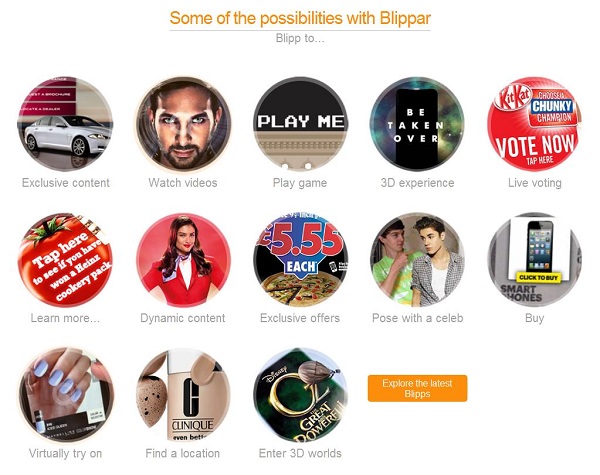Wearables were meant from the beginning to offer the means for new ways of advertising and new search methods. Blippar’s implementation of AR advertising and image recognition into Google Glass is firm proof of that.
Ambarish Mitra, the CEO of Blippar, showcased at MWC in Barcelona the app that makes all of this possible. Certainly, the idea of augmented reality advertising isn’t new, as numerous companies have already played with this technology, Cadburry and IKEA being only two examples.

Mitra explained that “Glass today can be likened to what mobile phones were in early nineties. We at Blippar anticipate that if Glass reaches a couple million users in its first year of launch, it will be a good business opportunity for us to develop in the space. We are investing in the potential of Glass.” I have to admit that the CEO of this company is right. Smart glasses are still a new thing, and people are currently only scratching the surface in terms of the applications that these wearables could have.
Blippar wouldn’t mind at all if the user base of Google Glass went beyond one million, especially since its app is used by five million people worldwide. In terms of brands and publishers, Blippar offers its AR advertising service to 750 companies, a number that will certainly grow in the future.
Besides Android, which is obviously the operating system Google Glass comes with, Blippar also works with smartphones running iOS, Blackberry OS or Windows Phone. Assuming that these operating systems showed up one day in a pair of smart glasses, it wouldn’t be difficult for Blippar to port their app to the wearables.
The demonstration that Mitra conducted at MWC also included the recognition of images, products, and even human faces. The last aspect is a bit scary, especially since Google claimed that it won’t implement face recognition into its smart glasses.
While Google Images is able to recognize pictures and can even decipher some product logos, the face recognition and AR advertising technologies that Blippar brings to the table are definitely innovative, especially in the context of smart glasses. In time, tech companies will hopefully come with even more diverse applications for wearables. I’m confident about this, as smart watches and smart glasses are only the beginning of the adventure.
Be social! Follow Walyou on Facebook and Twitter, and read more related stories about the Häagen-Dazs AR Concerto Timer and Microsoft IllumiRoom.

 Fake news, conspiracy theories and misinformation aren't just problems for Facebook, YouTube and Twitter. They're also rampant on Instagram. While Instagram has been working to reduce the reach of false posts, starting this week, it will go a step fu...
Fake news, conspiracy theories and misinformation aren't just problems for Facebook, YouTube and Twitter. They're also rampant on Instagram. While Instagram has been working to reduce the reach of false posts, starting this week, it will go a step fu...
 Fake news, conspiracy theories and misinformation aren't just problems for Facebook, YouTube and Twitter. They're also rampant on Instagram. While Instagram has been working to reduce the reach of false posts, starting this week, it will go a step fu...
Fake news, conspiracy theories and misinformation aren't just problems for Facebook, YouTube and Twitter. They're also rampant on Instagram. While Instagram has been working to reduce the reach of false posts, starting this week, it will go a step fu...




 Chances are, you don't spend a lot of time thinking about the logistics of international shipping -- but you shouldn't be surprised that transportation hubs are ripe for export fraud. Part of the reason for this is that there's simply too much intern...
Chances are, you don't spend a lot of time thinking about the logistics of international shipping -- but you shouldn't be surprised that transportation hubs are ripe for export fraud. Part of the reason for this is that there's simply too much intern...











